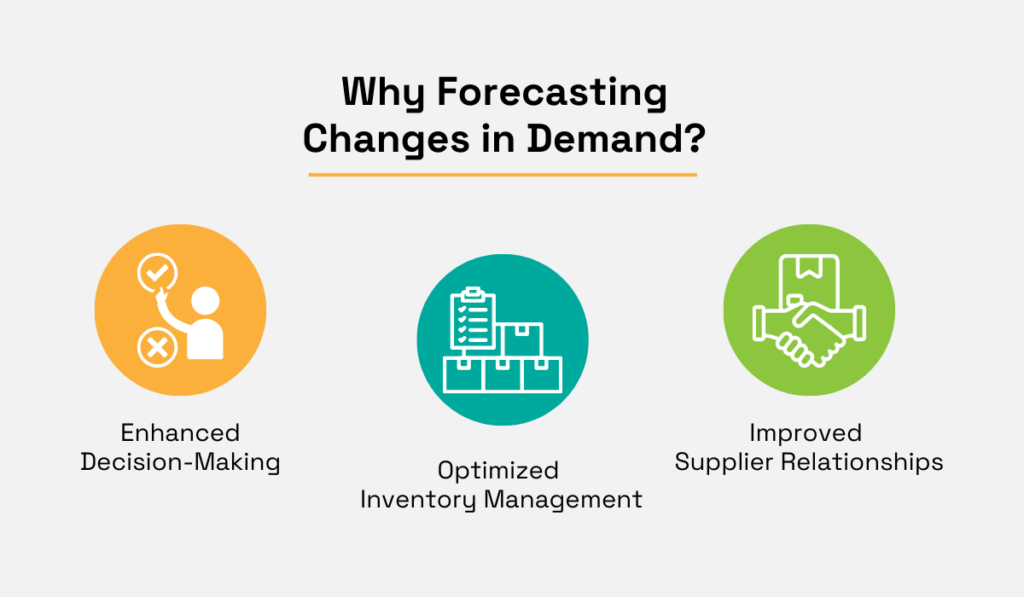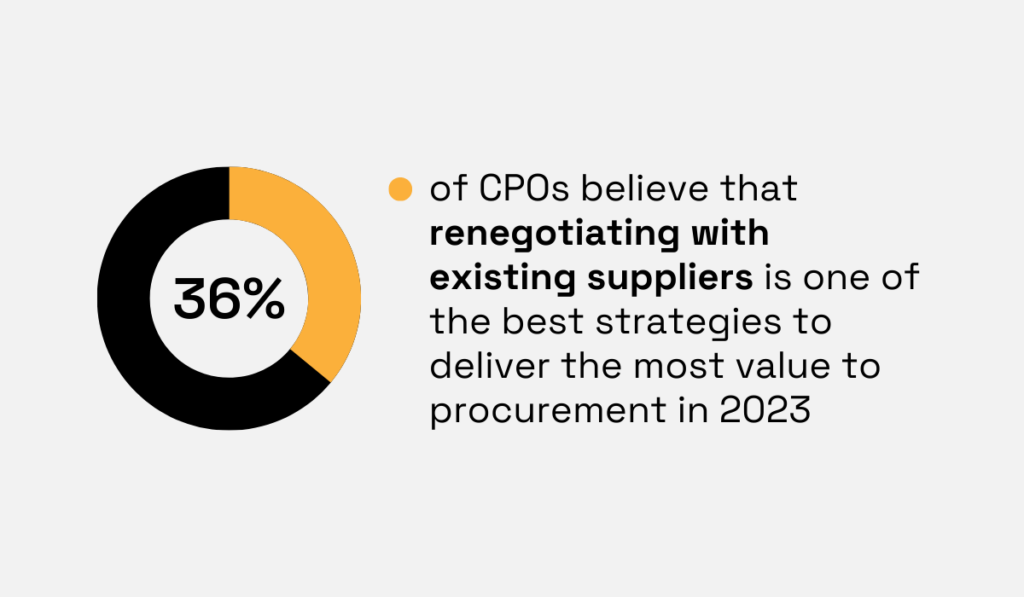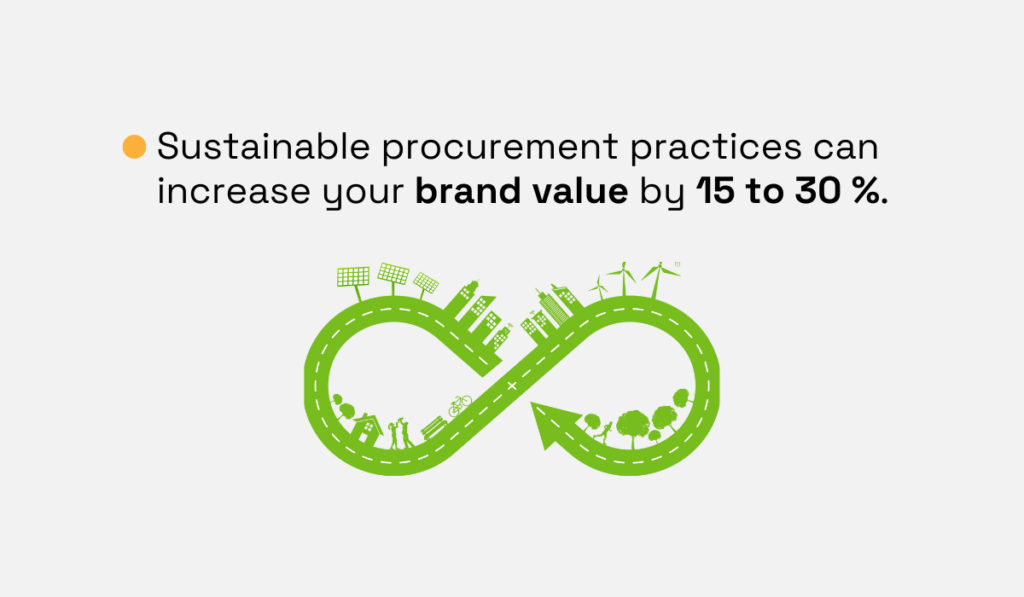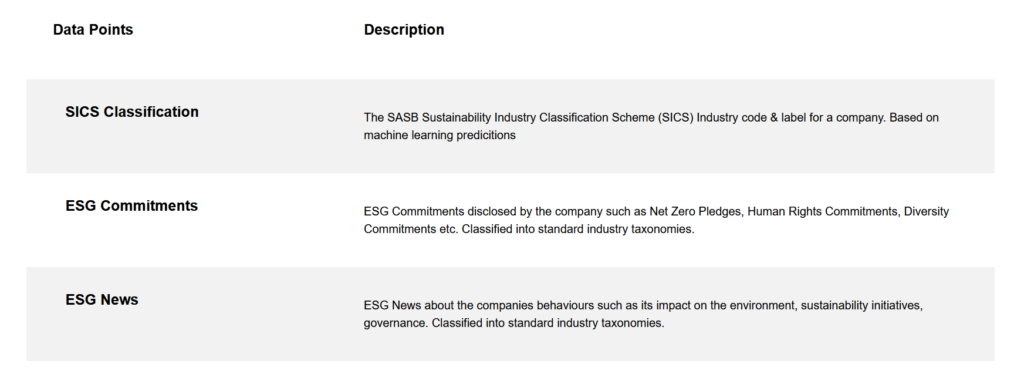6 Innovative Ways Procurement Can Use Data


Data stands as a valuable asset in procurement. It offers a clear window into your spending and empowers you to make informed decisions.
However, the potential of procurement data extends far beyond spend analysis.
In fact, data can be highly beneficial in sourcing the right suppliers, forecasting customer demands, improving supplier performance, and fortifying relationships with your suppliers.
These are just a few of the innovative ways to use procurement data.
With that said, let’s dive right into the heart of the matter and explore these and more innovative ways to make use of procurement data.
The first innovative way of using data in procurement we will address today is all about getting more value from your sourcing operations.
Simply put, this means optimizing and improving your supplier sourcing activities to reap benefits such as:
The importance of finding the right suppliers cannot be overstated in achieving these benefits, and data plays a pivotal role in this endeavor. Let’s break it down.
Traditionally, procurement teams often relied on established suppliers—those they had prior experience with or those recommended through word of mouth.
However, the business environment is in constant flux.
Supply chain disruptions occur, material costs fluctuate, geopolitical situations come into play, and global events like wars and environmental crises influence supplier accessibility and performance.
In such dynamic environments, relying on past connections and often outdated supplier databases is not prudent.
Fortunately, the advent of modern technologies, particularly AI and machine learning, has created fresh opportunities to tap into a wealth of supplier data from external sources.
This transformative shift means you don’t have to cling to old suppliers that may no longer suit your procurement needs.
Instead, you can discover and source new, reliable suppliers based on fresh information from big data companies employing AI and machine learning to provide up-to-date supplier insights.
Among the pioneering companies in this field is our very own Veridion, a supplier discovery enabler that expertly combines AI and machine learning.

Source: Veridion
With access to a global supplier database boasting over 80 million entries, Veridion can promptly generate a shortlist of potential candidates.
We keep our supplier data updated on a weekly basis, offering you comprehensive information, from a company’s location and size to specific details about its products, services, certifications, sustainability criteria, and more.
Moreover, Veridion is designed to help you mitigate supplier risks by promptly alerting you to changes in a supplier’s business activities.
For example, if a supplier loses a specific certification, you will be informed in a timely manner to make informed decisions.

Source: Veridion
So, this tool not only guarantees that your sourcing decisions are based on the most current and accurate information but it also saves you a substantial amount of time that you would otherwise spend hunting for suppliers.
The key takeaway here is that selecting suppliers based on the most accurate and recent data provides more value than relying on past connections.
Prior collaborations do not guarantee ongoing reliability.
Therefore, the smart move is to harness the power of data to enhance your sourcing operations, making them more efficient, informed, and, ultimately, more valuable for you.
In a constantly evolving marketplace, staying one step ahead of changes in customer demand is essential for a successful procurement.
By leveraging data, you can identify patterns and trends that provide valuable insights into shifts in demand.
This allows you to make informed decisions about inventory levels, production schedules, and supplier relationships.
Statistics also support this approach—in fact, research has found that procurement analytics tools can increase demand forecast accuracy by 55%.

Illustration: Veridion / Data: Simfoni
Now, let’s break down why this is crucial for procurement.
First and foremost, data provides you with a comprehensive view of customer behavior, enabling your team to make more informed decisions.
By understanding your customers’ preferences, order patterns, and historical data, you can effectively tailor your sourcing strategies to align with customer demand.
Furthermore, accurate demand forecasting, based on data analysis, is pivotal for maintaining optimal inventory levels.
This minimizes the risk of overstocking, which incurs storage costs, or alternatively, stockouts, which lead to customer dissatisfaction.
Finally, data-driven insights allow your procurement team to collaborate with suppliers more proactively.
By forecasting shifts in demand and communicating these insights to your suppliers, you can foster closer and more productive supplier relationships.
On their end, suppliers can adjust their production schedules accordingly, ensuring a smoother supply chain.

Source: Veridion
Let’s round this innovative way to use procurement data with an example from Amazon, an e-commerce giant.
Amazon uses data-driven forecasting through machine learning by analyzing purchasing data on products.
Machine learning algorithms process vast datasets, enabling them to predict what products will be in demand, when, and where.
This approach helps them optimize their inventory, reduce operational costs, and deliver a personalized shopping experience, which significantly enhances customer satisfaction.
In summary, leveraging procurement data to identify and forecast changes in customer demand can help you optimize your operations and prevent overstocking or understocking, all while improving your relationship with suppliers and ensuring customer satisfaction.
Procurement data also offers a way to enhance your purchasing. It’s all about ensuring top-notch product quality at the best prices.
Let’s explain this more thoroughly.
Imagine a manufacturing company that sources raw materials from various suppliers to produce its products. By scrutinizing procurement data, they can effectively optimize their buying process.
This involves analyzing real-time pricing, logistics costs, and transportation expenses to pinpoint the most cost-effective suppliers offering the best materials.
But there’s more to it.
This company can also streamline the purchasing process with existing suppliers. They can analyze past prices, current rates, order quantities, and market conditions.
With this insight, they are well-equipped to negotiate more favorable prices.
For example, if they paid more for raw materials due to market fluctuations last year, they can leverage this historical data to secure a better deal this year.
What’s exciting is that this strategic use of procurement data aligns with what global chief procurement officers consider highly valuable.

Illustration: Veridion / Data: Deloitte
According to Deloitte’s 2023 global CPO survey, this practice significantly boosts procurement efficiency and cost-effectiveness, as demonstrated by our imaginary manufacturing company’s ability to secure high-quality materials at the best prices through data-driven decisions.
In summary, the innovative use of procurement data aids in the purchasing of top-quality products at competitive prices and significantly enhances overall procurement efficiency.
Another innovative way to use data in procurement is to prevent rogue spending, which involves the unauthorized or unmanaged purchasing of goods and services outside of established contracts and procurement processes.
Insightful findings from the 2019 Maverick Spend Report by the Hackett Group shed light on the underlying causes of rogue spending, often referred to as maverick or tail spending.
The primary culprits identified include a lack of self-service or guided buying tools, limited awareness about procurement procedures and approved suppliers, and a reluctance among employees to modify their behavior, despite clearly articulated policies and procedures.

Illustration: Veridion / Data: The Hackett Group
And rogue spending should be definitely prevented, as it can have a significant negative impact on your organization:
Luckily, data can be your ally in combating rogue spending effectively. Let’s see how.
Through historical data, you can quickly identify deviations from established procurement processes and take corrective actions.
However, data alone is not enough to completely prevent rogue spending. The most crucial part here is spreading awareness across departments.
Only by effectively communicating the impact and consequences of rogue spending for the company can you ensure that everyone is on the same page regarding procurement practices and approved suppliers.
This will minimize rogue spending and lead to more cost-effective and quality-driven procurement processes.
Procurement data becomes even more powerful when it comes from both internal and external data sources. And this is especially valuable in getting a full view of spend.
Let’s elaborate.
Internal data encompasses your organization’s procurement history—old purchase orders, invoices, contracts, supplier information, and more.
External data, on the other hand, includes market trends, competitor information, and industry benchmarks. We are talking about large amounts of data here, so it doesn’t surprise that procurement teams were not so keen on analyzing all this external data.
Also, in the past, integrating this data would have been nearly impossible due to varying storage, classification, and analysis methods among competitors.
However, thanks to procurement automation and modern tools such as big data repositories, you can now access this vast pool of information from one central platform.
Moreover, when you integrate external data, you can then benchmark your procurement performance against industry standards and competitors by combining your data with external market information to understand how your organization fares in terms of costs, supplier relationships, and efficiency.
This approach can bring you some valuable benefits:
| Benefit | Description | Key Takeaway |
| Informed Decision-Making | The comprehensive view of spending allows you to make more informed decisions. For instance, you can determine whether your suppliers are competitive in terms of pricing and service quality by comparing them to those of your competitors. | Enhance decision-making based on supplier competitiveness. |
| Risk Management | A complete spend view helps you identify and mitigate potential risks. And by analyzing external data, you can anticipate market fluctuations and supply chain disruptions. | Identify and proactively manage risks. |
| Cost Optimization | By evaluating your expenses from various angles, you can uncover cost-saving opportunities. Whether it’s streamlining processes, identifying alternative suppliers, or negotiating more favorable terms, this data-driven approach leads to more cost-effective procurement practices. | Achieve cost savings and more efficient procurement. |
In essence, combining internal and external procurement data provides a 360-degree view of your spend.
This not only enhances your understanding of your organization’s financial commitments but also allows you to leverage data to benchmark your performance, make well-informed decisions, manage risks, and optimize costs.
Such an approach is critical for staying competitive and agile in the ever-evolving procurement landscape.
Throughout this article, we’ve emphasized how data empowers procurement teams to gain a comprehensive understanding of their suppliers and find ideal matches.
With this valuable insight, the focus naturally shifts toward fostering enduring relationships with these suppliers.
But why is this significant beyond the obvious benefits of reliability, and superior product quality at a competitive price point?
The answer lies in the far-reaching impact of data-driven procurement practices—sustainability.
By reaching higher sustainability levels, you not only positively impact the planet but your own brand as well.
Statistics underscore the remarkable advantages of sustainable procurement, revealing that it can increase brand value by an impressive 15 to 30%.

Illustration: Veridion / Data: World Economic Forum
This emphasizes the deep connection between procurement and how your company is perceived by consumers and stakeholders.
So, how does data fit into this equation?
Big data platforms and tools have emerged to gather comprehensive supplier data, enabling you to identify those who align with your environmental, social, and governance (ESG) goals.
Now, you can search for suppliers based on ESG criteria, such as diversified ownership, ESG policies, and handling of ESG controversies, and find those who align with your values and requirements.

Source: Veridion
By partnering with sustainability-focused suppliers, you contribute to a better future and enhance your company’s reputation as a socially and environmentally responsible organization.
As you can see, leveraging procurement data to strengthen supplier relationships can also be a bridge to sustainability.
It can elevate your organization’s reputation and position your procurement team as a catalyst for positive change in the ever-evolving business landscape.
Data offers numerous advantages for your procurement team and it goes beyond the basics of tracking expenses.
You can use it to identify top suppliers, strengthen relationships with them, get a comprehensive view of spending for better decision-making, and prevent spending outside established contracts and strategies.
Additionally, data can help identify changes in demand, allowing your procurement to stay agile in responding to market shifts.
These strategies can enhance your procurement and positively impact the company’s bottom line and reputation.
We part with the hope that you will take advantage of these innovative data-driven approaches to boost the efficiency of your procurement operations!